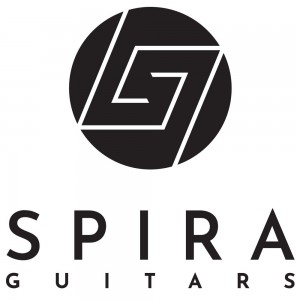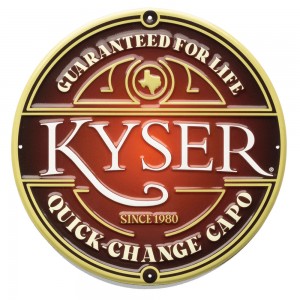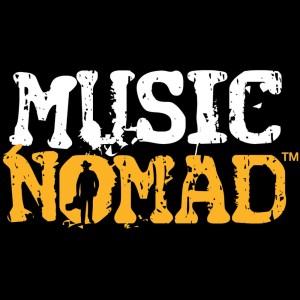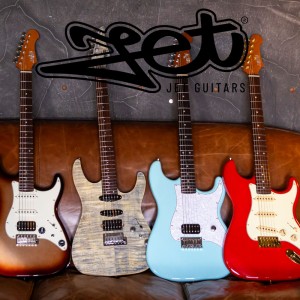
Everything you need to know
before buying an acoustic, electric or classical guitar
By Musicmaker Dublin
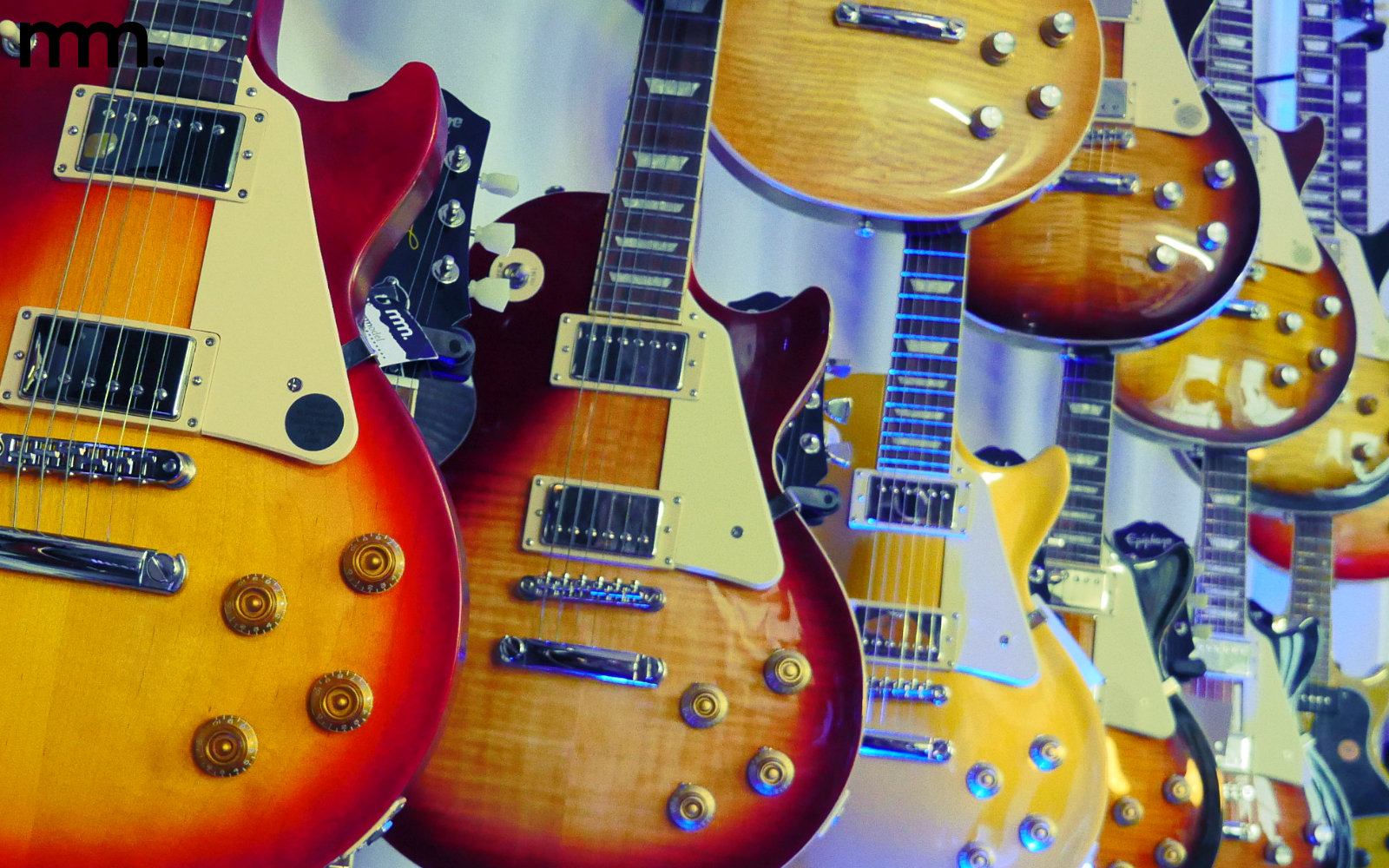
Buying a guitar is one of the great rites of passage in the life of a musician. It represents possibility, creativity, confidence, and adventure. Whether you are a complete beginner, a returning player, a parent choosing a first instrument for your child, or a more advanced musician trying to make sense of the overwhelming number of options, this guide exists to bring clarity, calm, and expertise to the process.
We will walk through every major decision involved in choosing a guitar, from body shapes and tonewoods to scale length, neck feel, pickups, and everything in between. Along the way, we will highlight Musicmaker favourites including Jet, Spira, Vintage, Epiphone, Taylor and more.
Sit back, relax, and enjoy the ultimate guide to choosing the right guitar.
Chapter 1: The Three Types of Guitar
Every guitar ever made belongs to one of three main categories. Understanding these categories immediately makes the buying process simpler and more intuitive.
Electric Guitars
Electric guitars rely on pickups and an amplifier to create their sound. They are physically easier to play due to slimmer necks and lighter string tension. They suit rock, indie, blues, metal, punk, jazz fusion, and modern pop.
Ideal for teenagers, adult learners, and players who want immediate comfort and versatility.
Musicmaker recommendations include Jet JS 300 and JT 300 models, Jet JS 400 and JT 400 models for more refined options, the Spira S 400 and T 400 for rock and metal learners, and Epiphone Inspired by Gibson models for players wanting classic heritage tones.
Acoustic Guitars
Acoustics are self contained instruments that require no amplifier. They project naturally and are brilliant for songwriting, strumming, fingerpicking, and singing along.
Ideal for folk, pop, country, singer songwriter styles and beginners of any age.
Our recommended range includes the Stagg SA20 and SA25 series guitars, the Vintage range for richer tones at a great value price, the Epiphone J 45 range for those wanting big classic sound, and Taylor guitars for players ready for world class feel and tone.
Classical Guitars
Classical guitars feature nylon strings, which are softer on the fingers and ideal for early learners. These instruments have wide fingerboards which help teach clean technique.
Perfect for children aged 6 to 11, school music programmes, classical music and Latin styles.
Musicmaker recommends the Linden classical packs and Encore nylon string range as great beginner friendly options.

There are no wrong choices.
Chapter 2: Body Shapes Explained
The shape of a guitar influences comfort, tone, playability, weight distribution, and aesthetic appeal. Understanding body shapes helps narrow down which guitars will feel natural in your hands.
Electric Body Shapes
- Strat Style - Comfortable contours, bright and versatile tone. Perfect for beginners and players who want a wide range of sounds. Jet JS 300 and JS 400 models are prime examples.
- Tele Style - Snappy and punchy with strong mids. Ideal for indie, country, blues and alternative rock. Jet JT 300 and JT 400 guitars offer superb value in this style.
- Les Paul Style - Thicker, warmer tone with long sustain. Suits rock, blues and heavier music. Epiphone Les Paul models are the classic reference point.
- Offset Shapes - Relaxed ergonomics, often favoured by alternative and indie players.
- Modern Metal Shapes - Sharper contours, hotter pickups, fast playing necks. Spira guitars excel in this category.
Acoustic Body Shapes
- Dreadnought - Large, loud and powerful with strong bass. Excellent for strumming and singing.
- Grand Auditorium - More balanced with a versatile tone suitable for both strumming and fingerpicking. Taylor 214ce and similar designs represent this beautifully.
- Concert and Orchestra Models - Compact, comfortable, and articulate. Ideal for fingerstyle and players who prefer a smaller guitar.
- Parlour - Vintage, characterful, intimate tone. Perfect for blues, folk, and relaxed playing. Vintage parlour models are a great introduction.

Chapter 3: Tonewoods and What They Actually Do
Tonewoods matter. They influence resonance, attack, brightness, warmth and the overall feel of the guitar. Here is a simple, beginner friendly breakdown.
- Spruce - Bright, clear, responsive. The most common top wood on acoustic guitars because it works well in every style.
- Mahogany - Warm and focused with strong midrange. A favourite for singer songwriters and fingerstyle players.
- Sapele - A close cousin of mahogany with a slightly more balanced tonal spread. Excellent all rounder and found on many affordable acoustics.
- Koa - Warm and sparkly with a beautiful visual grain. Starts bright and mellows over time. The Taylor 724ce is a perfect example of koa’s charm.
- Rosewood - Deep bass, shimmering highs, and complex overtones. A premium tonewood famously used on the Taylor 714ce.
- Maple - Bright and snappy, frequently used in electric guitar necks for clarity.
- Roasted Maple - Heat treated maple with improved stability, smoother feel, and darker appearance. Jet and Spira use roasted maple on many of their necks, giving beginners a premium feel at an accessible price.
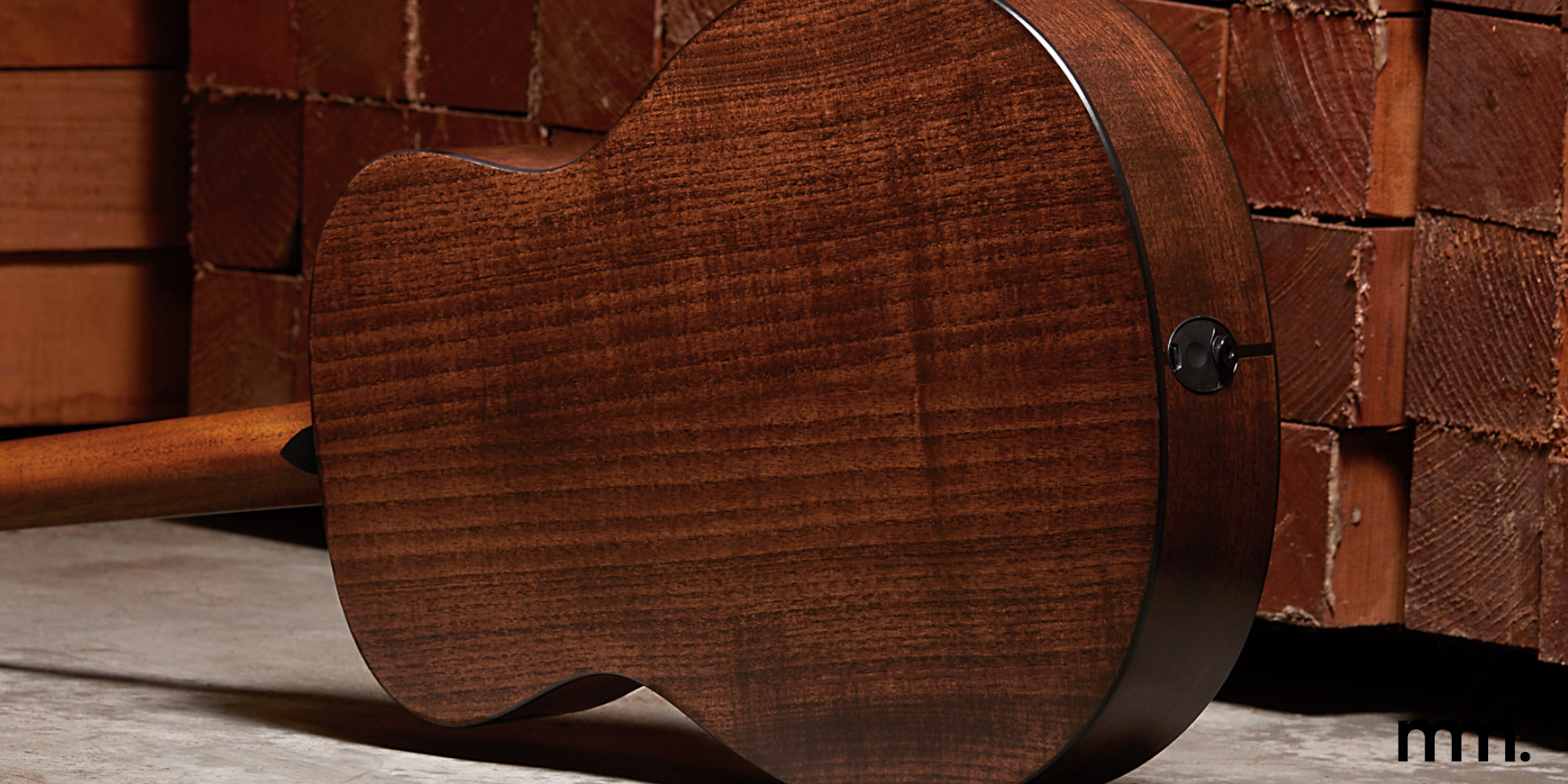
Chapter 4: Pickups for Electric Guitars
Pickups do more to shape an electric guitar’s voice than almost any other component.
- Single Coil - Bright, dynamic, clear and articulate. Ideal for indie, funk, blues and pop. Common on Strat and Tele style guitars.
- Humbucker - Thicker, warmer, and fuller. Designed to eliminate noise and provide powerful tones for rock, metal, jazz and fusion.
- P 90 - A gritty, mid rich sound that sits somewhere between a single coil and a humbucker. Perfect for vintage inspired tones and expressive playing.
Chapter 5: Scale Length, Neck Shapes and Nut Width
These three elements define how a guitar feels in your hands.
Scale Length - This refers to the vibrating length of the strings.
- 25.5 inch scale - Found on most Strat and Tele style guitars. Produces a tighter feel with clearer high frequencies.
- 24.75 inch scale - Common on Les Paul style guitars. Produces a slightly warmer tone with softer string tension.
Neck Shapes - Necks come in various profiles.
- C Shape - The most common and comfortable, perfect for beginners.
- V Shape - A vintage feel for players who like a defined ridge down the back of the neck.
- Slim or Thin Profiles - Designed for fast modern playing. Favoured by rock and metal guitarists.
Nut Width - A measure of the distance across the strings at the nut. It affects string spacing and playing comfort.
- Electric guitars usually sit around 42 mm.
- Steel string acoustics are often around 43 to 44 mm.
- Classical guitars are generally 52 mm.
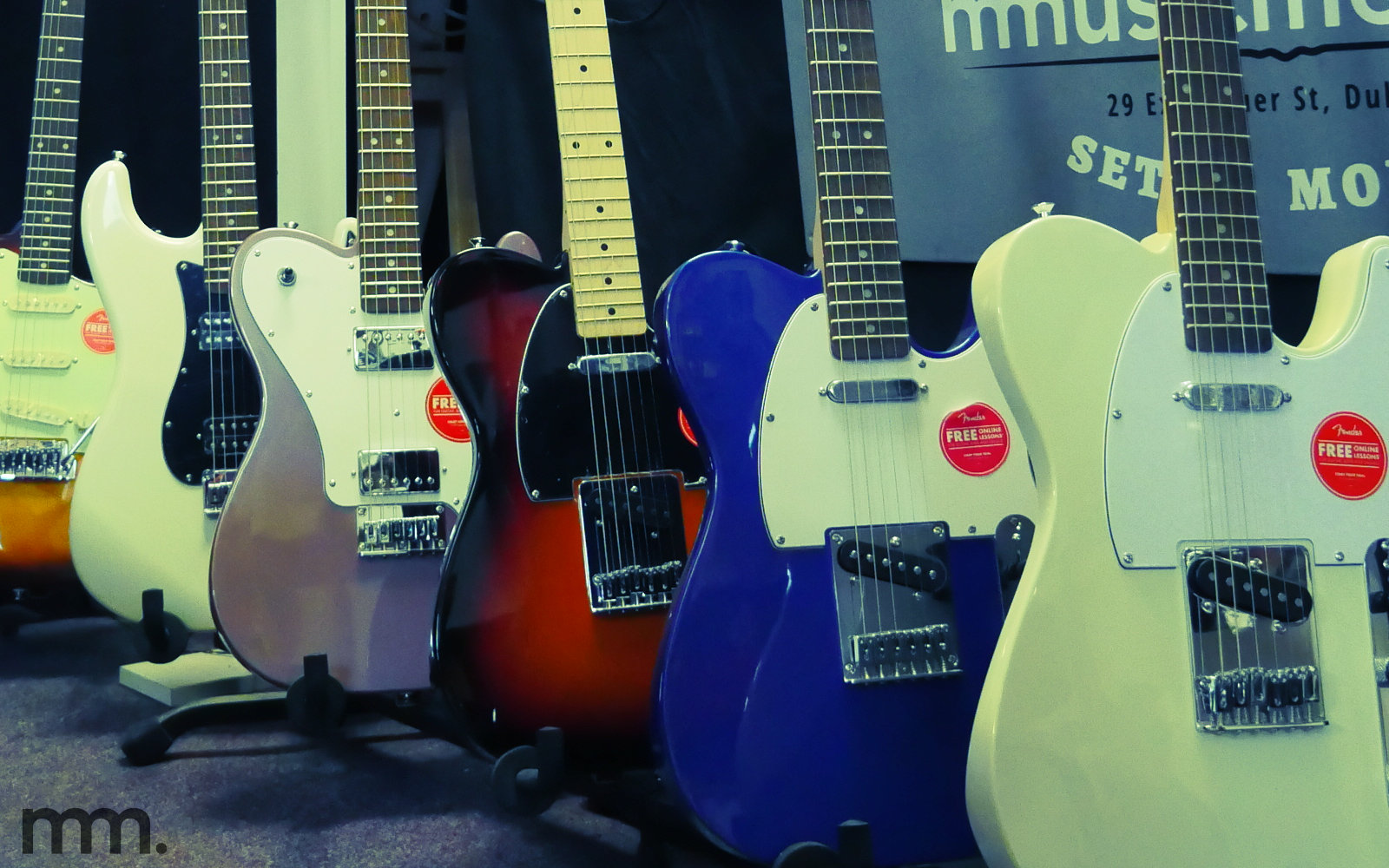
Chapter 6: Musicmaker Recommendations for Every Category
Best Beginner Electric Guitars
Best Intermediate Electrics
Best Beginner Acoustics
Best Intermediate Acoustics
Best Beginner Classical Guitars
Chapter 7: Common Beginner Mistakes and How to Avoid Them
- Do not buy the cheapest guitar online without trying it. - Always choose something well built and properly set up. Jet, Vintage, Linden and Encore packs are reliable options.
- Do not guess the size for a child. - Always speak to staff who can size them correctly within minutes.
- Do not forget essential accessories. - A strap, tuner, picks and gigbag make learning much easier.
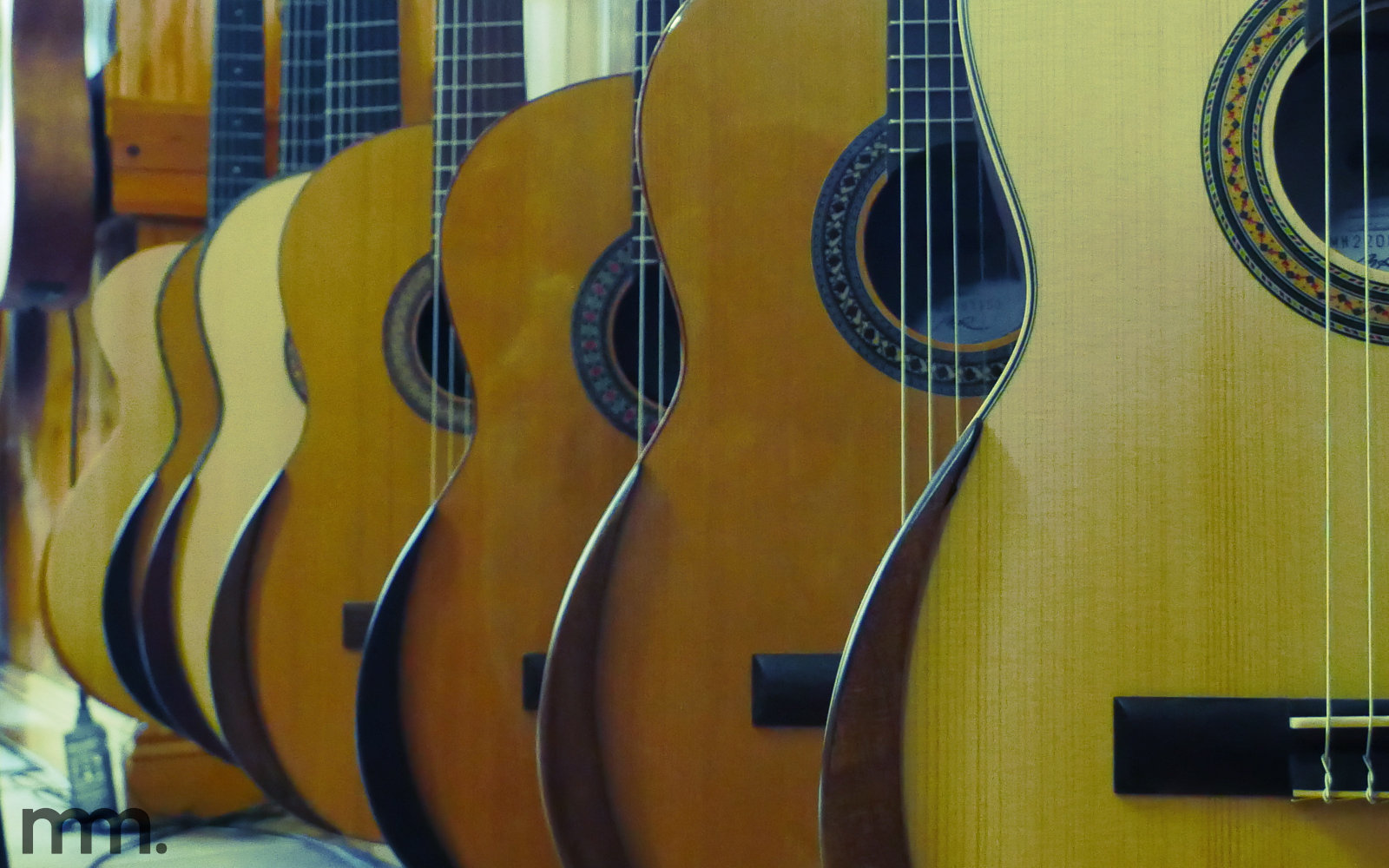
Chapter 8: Why Buy Your Guitar from Musicmaker
Musicmaker has spent more than forty years helping Irish musicians begin, grow, and master their craft.
- We select guitars for quality, consistency and playability.
- We are staffed by musicians, teachers and performers who understand what beginners and advancing players truly need.
We offer guidance, comparisons, setups, upgrades and honest advice without pressure.
You bring your enthusiasm.
We bring the expertise.
Together, we find the guitar that fits you.
Final Word
A guitar should inspire you. It should feel natural from the first moment you hold it. It should make you want to pick it up again and again. Whether it is an affordable Jet, a beautifully crafted Taylor, a warm Vintage acoustic or a classic Epiphone, the right guitar is the one that excites you every time you play.
Visit Musicmaker Dublin or browse online at musicmaker.ie.
Your guitar journey begins the moment you choose the one that speaks to you.
Frequently Asked Questions
Guitar Buyers Bible Ireland 2025
What is the best guitar for a complete beginner?
It depends on the player, but most beginners do very well with either a classical nylon string guitar or a comfortable electric guitar. Classical guitars are gentle on young hands and great for children. Electric guitars, especially models like the Jet JS 300 or JT 300, are easy to play and incredibly inspiring for teenagers and adults. Acoustic guitars are perfect for players who want to learn songwriting or sing while they play.
Should I start on electric or acoustic?
There is no wrong answer. If you love the sound of rock or pop, an electric guitar will make learning easier and more enjoyable. If you want to strum songs and play along with your voice, an acoustic is a great choice. The most important thing is choosing the type of guitar that excites you.
What size guitar should I buy for a child?
Guitars come in sizes such as one half, three quarter and full size. The correct size depends on the childs age, height and arm length. It is always best to ask Musicmaker staff to size a child properly, as this makes learning far more comfortable and natural.
Do I need to spend a lot of money on my first guitar?
No. There are excellent beginner guitars available for well under two hundred euros, including the Jet JS 300, JT 300 and Linden packs. The key is choosing something well made and properly set up. A good affordable guitar will encourage far more playing than an expensive one that does not suit you.
What accessories do beginners need?
At minimum, you should have a tuner, a strap, a few picks and a gigbag. These make learning easier and more enjoyable. Musicmaker offers beginner packs that include all essential accessories.
Is it better to buy online or in person?
Both are valid, but trying guitars in person is extremely valuable because feel matters as much as sound. At Musicmaker you can play multiple guitars side by side, compare tones, and get guidance from experienced staff. If you buy online, Musicmaker ensures that your guitar is properly inspected and set up before shipping.
What brands are best for beginners in Ireland?
Jet and Spira offer some of the best value electric guitars available in Europe. Linden and Encore are excellent for beginner acoustics and classical guitars. Vintage and Epiphone offer brilliant mid range options, and Taylor guitars are exceptional for players who want premium quality.
How do I know when it is time to upgrade my guitar?
When your technique improves to the point where your guitar feels limiting, or when you begin to notice differences in tone, feel and sustain, it may be time to upgrade. Many players move from entry level models like a Jet JS 300 to mid range guitars such as Epiphone or Vintage before eventually exploring premium brands like Taylor.
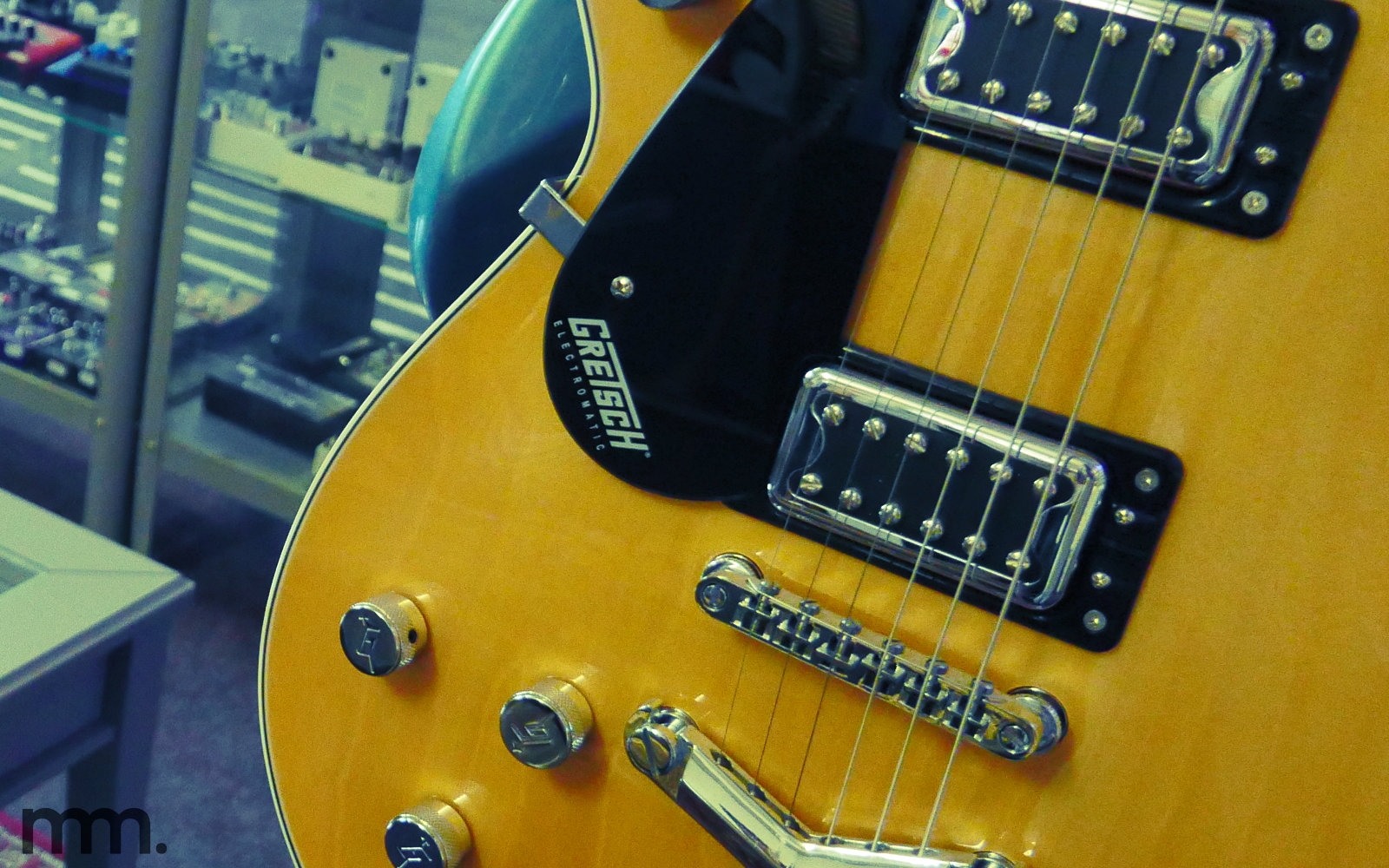
The Great Guitar Glossary
Complete Beginner Friendly Definitions for Acoustic, Electric and Classical Players
This glossary gathers all the essential terms new guitarists encounter, explained in simple everyday language.
Perfect for beginners, parents, teachers, and anyone trying to make sense of the guitar universe.
A
Action - The distance between the strings and the fretboard. Lower action is easier to play but can buzz. Higher action is harder to press but gives more volume and clarity.
Active Pickups - Pickups that use a battery powered preamp to boost signal and reduce noise. Common in metal and high gain styles.
Amplifier - A device that increases the volume of an electric or electro acoustic guitar. Comes in many sizes, from practice amps to stage amps.
Archtop - A guitar with a carved, arched top. Often used in jazz for its warm, mellow sound.
B
Bolt On Neck - A neck attached to the guitar body with screws. Common on Strat and Tele style guitars. Offers clarity, snap and easy repairability.
Body - The main wooden section of a guitar. Shapes the tone and the feel of the instrument.
Bridge - The piece of hardware where the strings anchor on the body. On acoustics it transfers vibration into the top wood. On electrics it sets intonation and tuning stability.
Bracing - The wooden structure inside an acoustic guitar that supports the top and shapes the sound.
Buzz - Unwanted rattling sound caused by strings touching frets. Often fixed by adjusting action, neck relief or nut height.
C
Capo - A clamp placed on the fretboard to raise pitch and change key without changing chord shapes. Essential for singer songwriters.
Cutaway - A carved section of an acoustic or electric body that allows easier access to higher frets.
C Shape Neck - A common neck profile that feels rounded and comfortable. Great for beginners.
Classical Guitar - A nylon string guitar with a wide neck. Used in classical, Latin and traditional styles. Ideal for young learners.
D
Dreadnought - The most popular acoustic guitar shape. Loud, bold and bassy. Fantastic for strumming and singing.
Double Cutaway - A guitar with two scooped sections for upper fret access. Think Fender Stratocaster and SG style guitars.
Dynamic Range - The difference between the quietest and loudest notes a guitar can produce cleanly.
E
Electric Guitar - A guitar that relies on pickups and an amplifier to produce sound. Easier to play than acoustics for many beginners.
Electro Acoustic - An acoustic guitar fitted with a pickup so it can be amplified. Perfect for gigging and recording.
EQ - Short for Equalisation. Adjusting bass, mid and treble to shape tone.
F
F Hole - Sound holes shaped like the letter F, found on hollow and semi hollow electric guitars. Offer airy, resonant tone.
Fingerboard - The surface where your fingers press the strings. Usually made from rosewood, maple or ebony.
Fret - The metal strips across the fingerboard that divide notes.
Fretboard Radius - How curved or flat the fretboard is. Smaller radius feels more curved and is good for chords. Flatter radius helps bending notes.
G
Gigbag - A soft padded case used to protect and transport a guitar.
Graphite Nut - A nut made of synthetic graphite, offering smooth tuning and reduced string friction.
Grounding - A wiring technique used to reduce electrical noise in electric guitars.
H
Harmonics - Bell like tones produced by lightly touching the string at certain points rather than pressing down fully.
Headstock - The top section of the guitar where the tuning machines are mounted.
Humbucker - A double coil electric guitar pickup designed to reduce noise and hum. Produces warm, powerful tones.
I
Intonation - The accuracy of pitch across the entire fretboard. Set by adjusting the bridge saddles.
Inlays - Markers on the fretboard that help players find positions.
J
Jack Input - The socket where you plug the guitar cable in.
K
Kerfing - The lining inside an acoustic guitar body where the sides meet the top and back. Adds strength and stability.
Killswitch - A switch that rapidly cuts the signal for stutter or rhythmic effects.
L
Laminated Top - Made from multiple thin layers of wood. Durable and great for beginners.
Locking Tuners - Tuners that clamp strings in place for increased tuning stability. Popular on modern electric guitars.
Luthier - A craftsperson who builds or repairs stringed instruments.
M
Mahogany - A warm sounding tonewood with strong midrange. Common in both electric and acoustic guitars.
Maple - A bright, snappy tonewood often used in necks.
Metronome - A device that keeps a steady tempo for practice.
N
Neck - The long, narrow part of the guitar where the fretboard sits. Determines feel and playability.
Neck Relief - The slight forward bow in the neck that allows strings to vibrate freely. Adjusted with the truss rod.
Nut - The small piece at the top of the neck that spaces the strings correctly.
O
Offset Guitar - A guitar with an asymmetrical body shape. Comfortable for sitting and popular in indie rock.
Orchestra Model - A mid sized acoustic guitar with a balanced tone and comfortable shape.
P
Parlour Guitar - A small bodied acoustic guitar with a sweet, intimate sound. Popular for blues and folk.
P 90 - A single coil pickup with a fat, gritty tone. Sits between a true single coil and a humbucker.
Pick or Plectrum - A small piece of plastic or composite used to strike the strings. Different thicknesses change feel and tone.
Pickups - Magnetic coils that convert string vibration into electrical signal on electric guitars.
Piezo Pickup - A pickup used in electro acoustic guitars that senses vibration through the bridge.
Q
Quarter Sawn - A method of cutting wood for increased strength and stability.
R
Radius - The curve of the fretboard. More curve is better for chords, flatter is better for bends.
Rosewood - A dark, rich tonewood used on many fingerboards and high end guitars.
Resonance - How much a guitar vibrates and projects sound.
S
Saddle - The part of the bridge where the strings rest. Affects intonation and tone.
Scale Length - The distance between nut and saddle. Affects tension, feel and brightness.
Set Neck - A neck glued into the body, offering sustain and warmth. Common on Les Paul style guitars.
Single Coil - A bright, clear type of pickup used on many classic electric guitars.
Soundboard - The top of an acoustic guitar that vibrates to project sound.
Soundhole - The opening in the top of an acoustic guitar.
Strap Button - A small metal button used for attaching a strap to the guitar.
T
Tailpiece - The part of a guitar where the strings anchor at the back.
Tonewood - The wood used to build a guitar. Influences sound, weight and appearance.
Truss Rod - A metal rod inside the neck used to adjust the curvature.
Tremolo System - A bridge that allows pitch bending via a tremolo arm.
U
Upper Bout - The top half of the acoustic guitar body.
V
V Shape Neck - A neck with a slight ridge down the centre. Found on some vintage and modern guitars.
Volume and Tone Controls - Knobs used to shape the guitar’s sound on electric models.
W
Worn Finish - A guitar finish designed to look aged or naturally played in.
Z
Zero Fret - A fret placed before the nut to improve consistency of open string tone.

